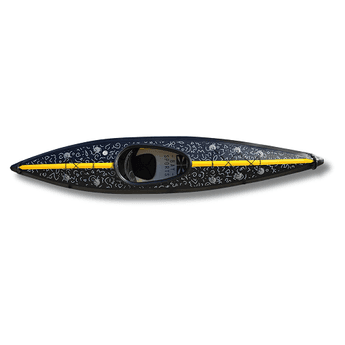- Home
- Gear & Reviews
- Anas Acuta
Anas Acuta
Anas Acuta Description
The Anas Acuta is a kayak brought to you by Valley Sea Kayaks. Read Anas Acuta reviews or submit your own review to share with the paddling community. Check out a few other kayak recommendations below or explore all kayaks to find the perfect one for you!
Valley Sea Kayaks
Anas Acuta Reviews
Read reviews for the Anas Acuta by Valley Sea Kayaks as submitted by your fellow paddlers. All of the reviews are created and written by paddlers like you, so be sure to submit your own review and be part of the community!
Moved onto an AA from a…
In the hands of a 150-180lb…
In the hands of an experienced paddler bent on close-in conditions paddling, it takes on the characteristics of a rally car, able to do anything the paddler asks of it, most often intuitively.
This is the 10yr. review of my Anas Acuta, which I had customized skeg-less with a forward moved front bulkhead (to accommodate a Henderson foot pump with my 6' ht.) for the express purpose of close-in conditions paddling. At 200lbs with a generous load of gear for day tripping, I sacrifice some speed in flatter conditions but easily make up for it when longer boats struggle in bigger conditions. Worth noting, at my weight the Anas will ram through surf instead of ride over it. 170~180lbs is about the breakpoint for what would be considered a "dry" ride.
Weathercocking in flat seas over 10kts, a skeg would make holding course easier, granted, but add waves to the mix and hybrid strokes & experience will easily keep it on course, due to its crisp chines and tremendous rocker. This extreme chine / rocker combination is as sensitive as any sea kayak as I have ever paddled to weight shifts; fore/aft as well as side/side, great for showcasing various strokes, draws, edging, etc.
Although the Anas will not surf as easily as the Pintail, the Anas will not only stay planted in confused and combining wave conditions, it will truly come alive and make clapotis fun to paddle in, even a half paddle length from rocks, sea walls, whatever – even at speed.
If pushed hard for speed or sprint, it is best paddled with a Greenland paddle as a wide Euro blade will tend to find the 1st inch or so of deck edge upon catch, due in part to the fish form design keeping much of the boat's 20" beam ahead of the knees. Though it would mess up the lines of the boat, it would be interesting to scallop the deck down to the waterline through the foot to knee region in order to accommodate power paddling with a euro blade.
To say the Anas is a joy to roll is an understatement. It inspires you to keep going further. Greenland trick rolls, hand rolling, Reenter & Roll, whatever. Just foam out the seatback, post your head on the rear deck, and you’ll be good to go. The rear deck is about as low as you’re going to find on a manufactured sea kayak and the ocean cockpit is guaranteed to provide instant rock solid stability for all skills as well as Reenter & Rolling. With size 11 1/2 feet, my solution to the low deck height has been to foam out the foot well and angle it forward from the foot arch.
Although the hatches have remained watertight through the past decade, why would anyone want to load down such a sport machine out at the ends with camp gear, etc. and strip it of its playability? That said, yes, it can be done with a minimalist weekend load – 1 1/2 man tent, warm Wx sleeping bag, food & beverage. The important thing is that the day hatch is larger than it needs to be and is easily accessible on-water.
Although easier to carry by the ends than by the toggles, the toggles and perimeter deck line will be welcomed by the swimmers if you do swim supports, and by fellow ‘rescuers’ during skills courses or practice.
The Anas Acuta is a day boat,…
Like the other posters here, I really like this boat a lot. My…
My comments are on the 2008 ocean cockpit model, which is a little different from earlier ones. And for reference, I'm 5'7" & 170 lbs.
Appearance is classic - an adaptation of a real Greenland skin boat to western physiques and uses, yet not bloated beyond recognition like so many other commercial kayaks. A good compromise between the old and the new. Looks as sporty as it paddles.
Quality of construction is now on a par with many North American boats, and attention to detail has increased significantly over older models. Shining a light through the layup shows inconsistent thickness or coloring of gelcoat on the bottom of the hull, but it is not obvious looking at the inside or the outside of the boat. I was just glad to see a British kayak that wasn't 90% gelcoat. Fit and finish are very good, and I found no voids or anomalies in the layup.
Skeg slider placement is very intuitive, and works smoothly. Skeg blade is large, and very effective in keeping the boat tracking straight in winds up to 25kt. The boat balances well for a solo carry, and is not heavy - maybe 50 - 52 lbs. Hatches are watertight, and bulkheads do not leak. Deck now has a recess for a 70P compass right in front of the front hatch. And speaking of hatches - THEY ARE ACTUALLY TETHERED TO THE BOAT. I can't count how many VCP, P&H, and NDK owners that I know that have lost hatch covers in the past. A welcome upgrade! Bow and stern toggles also have tethers to keep them on the deck and out of the water while paddling.
Deckline and bungee layout is very logical, and there are more bungees than you need. Recessed fittings are very well finished. Rear deck bungees and hatches aren't optimally laid out for a Greenland storm paddle, but it works. I'd have liked to have seen reflective decklines at this price, but you can't have everything. They're easy and cheap enough to replace anytime I like.
Seat feels high until you try to put your finger between the back of the seat and the hull - it's actually pretty low in the rear - as low as you'd get sitting on a foam seat. This seat isn't for everyone, though. I find it comfortable so far after a month of owning the boat. The backband is so-so, but I'll leave it in for now.
Paddling -- Wow! More maneuverable than any other commercial sea kayak of that length that I've ever paddled, yet easy to keep on course, especially with the skeg. The boat loves rough water & breaking waves, and is reassuring while still being a lot of fun to paddle. It catches waves easily, and surfs with good control characteristics. Turns on a dime in rock gardens, too. Steep waves bigger than 1.5 feet tend to wash on the decks, but I don't mind that. Boat rolls very easily, and is well suited for G-style rolling, sculling, and balance braces. Even hand rolls aren't difficult. I can layback almost to the deck with the stock seat, which makes rolling a breeze. If I scoot forward a little in the seat, I can bang my head on the rear deck.
Top speed isn't great. However, maintaining a normal cruising pace (4 - 4.5 MPH) is easy. I topped out at just over 6 MPH on a GPS when it became more effort than it was worth for any further gain in speed.
Overall, this is an excellent low volume day/play boat for the small to medium paddler that remains fairly true to its Inuit heritage. It's also one of the oldest commercial sea kayaks, which is a testament to it's design.
I grew up paddling one of…
As a day boat, especially for the smaller paddler, this is just the ticket.
In spite of it's relatively narrow (only by the standards of most modern bathtubs) beam, the Anas is very stable, it's hard chines give it great primary and secondary stability. It maneuvers fantastically especially up on edge, so you can use it for rock hopping and close in work. Turning is also easy, there is little need for a rudder, since a gentle lean to the outside of the turn will work at least as well and with less drag.
The ocean cockpit is absolutely the way to go, ok yes, your skills need to improve, but that's a good thing right? I like the smaller opening as it's much easier to keep the water out.
The only cons with this boat, are limited space and displacement, which is not really an issue for day paddling, (I weigh 200lbs), and a slight speed deficiency compared to rounded section hulls.





